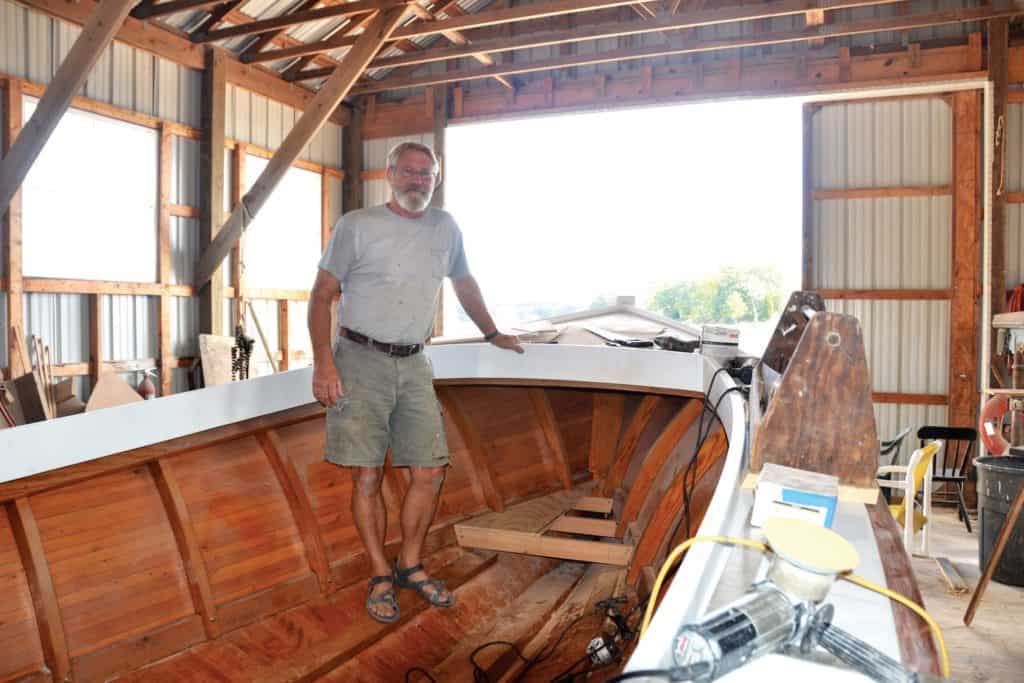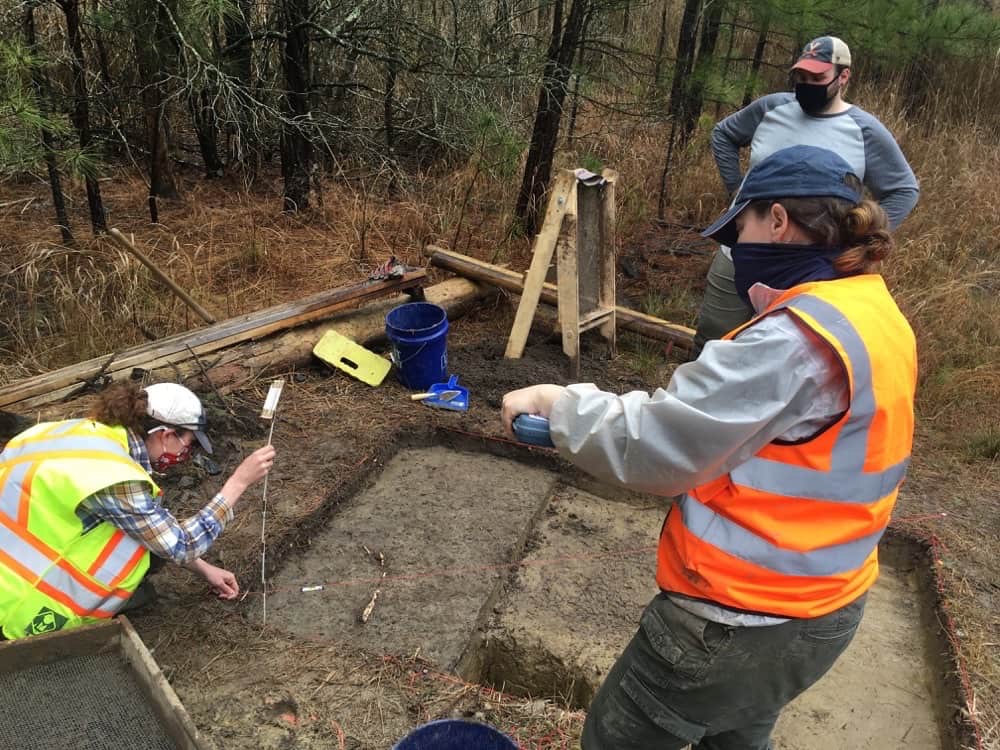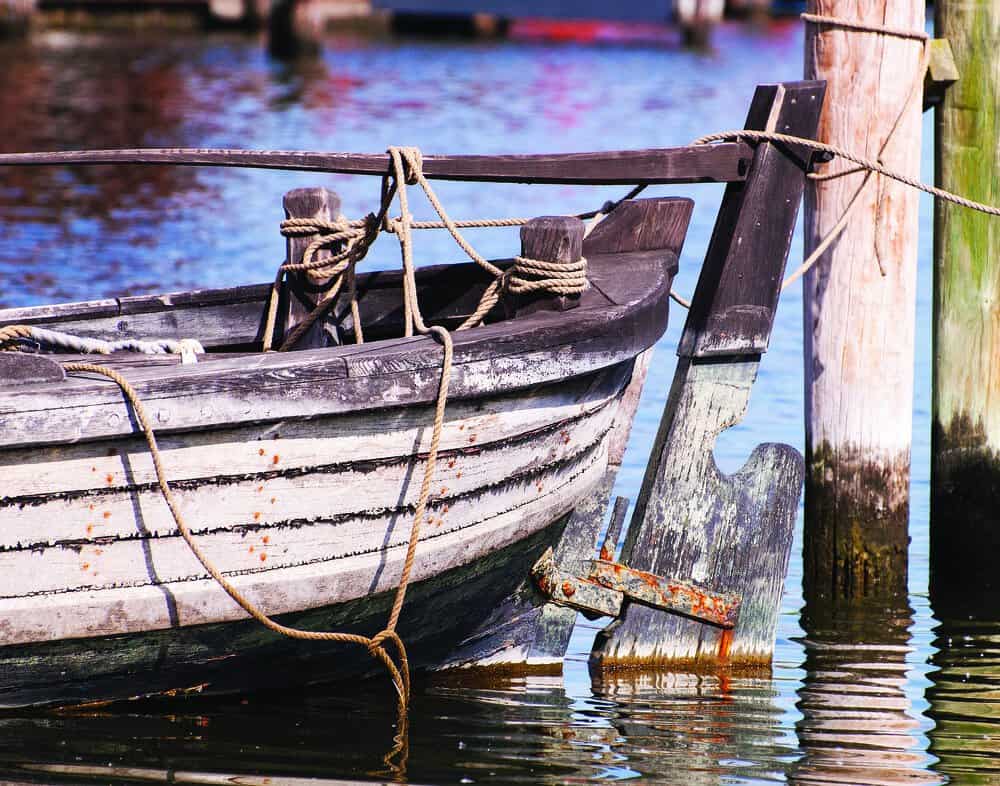The gift of a wooden skiff is a serious sign of true commitment in a love relationship between a Northern Neck, Virginia boy and girl. Back about 1970, George M. Butler gave such a skiff as a pre-marriage gift to his high school sweetheart, Becky Newsome. It must have been a good one, as they married in 1972 and have remained so for 46 years. Becky’s 14-foot skiff was Butler’s second boat-build, and just the beginning of many more to come.
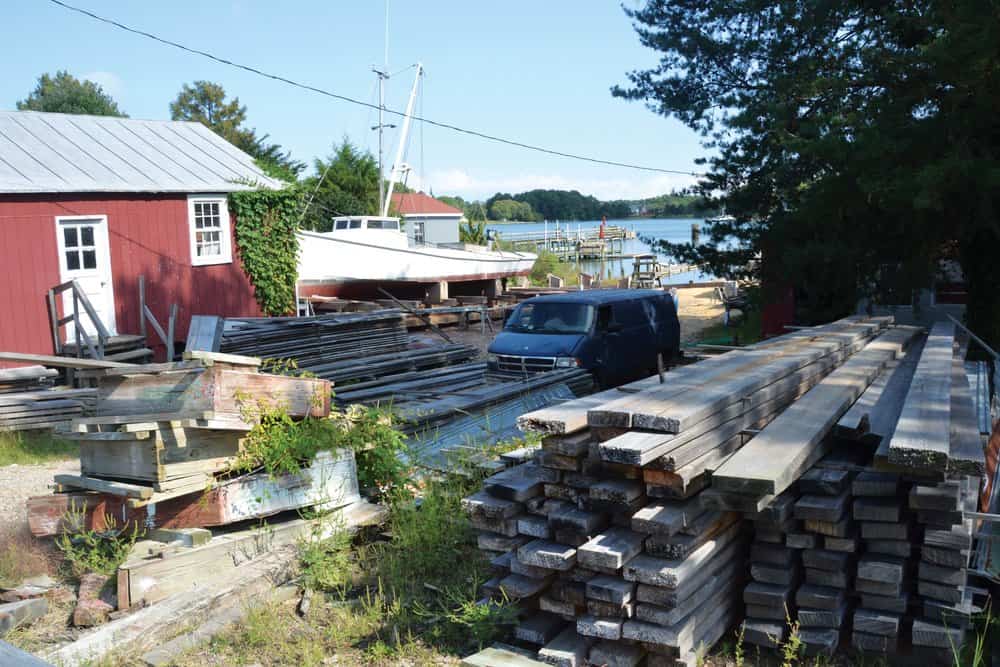
Butler’s father, George P. Butler, owned Reedville Marine Railway. Butler grew up fetching nails and tools for his father and blowing sawdust off his dad’s saw marks until he was old enough to hammer his own nails and cut his own planks. Butler and Becky were Northumberland High School students in the late ’60s when they started dating. Becky’s aunt Adell Falter had moved back to Reedville from Baltimore in 1970. She asked Butler to build her a 12-foot flat-bottom crab skiff. Adell owned a cottage on Cubitt Creek and wanted a skiff to gunkhole up into the guts and coves and pole along the mudflats in search of soft-shell crabs. “She expressed some interest in wanting a skiff and asked me if I could build it,” says Butler. “I told her that ‘I guess I could do it but that I have someone to help me along if I get jammed up.’ I’d go down some evenings to Dad’s workshop and work on the skiff. I was dating then, so I couldn’t let that cut into my dating time too much, but I worked along on it. If I had a problem with the skiff, I’d leave it to the next day and ask Dad for advice. Dad always had a skiff going and I had watched him, so I had a pretty good idea how to build a skiff. He didn’t always encourage me to build boats, but he didn’t discourage me either.”
Butler started working at the yard in the summer of 1965. “All Dad wanted me to do that summer was run errands, and that didn’t always keep me busy,” says Butler. “The next summer, Dad gave me a hammer and a saw, and I was off and running.”
After graduating in 1970 he went to work full-time at the railway. He married Becky in 1972, and the future looked bright for a long and successful father/son railway business. That was cut short in 1976 when his father died of cancer leaving him in charge at the age of 24.
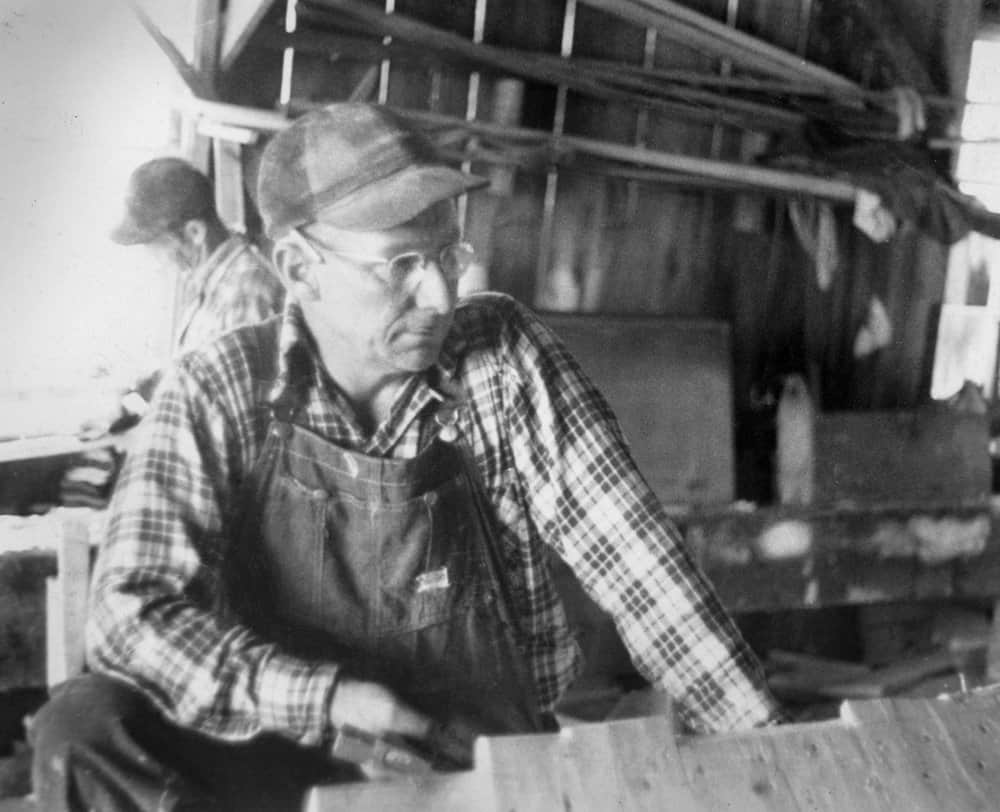
Boatyard history
Reedville is named for Captain Elijah Warren Reed who ventured from Maine to the Chesapeake in the summer of 1867 to fish for menhaden. After 20 years of sailing and fishing the oceans, Reed switched to fishing for menhaden out of Herricks Bay near Brooklin, Maine. The Maine fishery became too crowded for Reed, so he moved south and established a new fishery on Chesapeake Bay. He is considered the father of the Bay’s modern menhaden fishery.
Reed settled on the Northern Neck of Virginia in what would become Reedville. Commerce and community life grew there as the menhaden business and other commercial fisheries provided jobs. The fisheries created a demand for a variety of sizes and styles of wooden boats. About 20 years after Captain Reed arrived, Isaac Bailey opened a little boatyard on Cockrell Creek, on the town’s main street.
There was plenty of work at Bailey’s boatyard. He hauled, maintained and built boats of all kinds, but the menhaden business kept him extra busy hauling striker boats. Before the use of airplanes to spot fish, a striker rowed out in front, located fish and directed fishermen to schools of menhaden. Their job also entailed driving the fish into the net by striking the water with an oar—thus the term. Striker boats were about eight feet long and featured round bilges and carvel planking. Bailey’s 1893 ledger-book indicates that he built and sold striker boats for $60, flat-bottom skiffs for $12, and an unidentified type of sailboat for $120.
In 1906, Bailey sold his railway to Samuel Butler and Joseph Davis. Davis got out of the business sometime in the 1920s, and since then, the railway has been owned and operated by the Butler family. “My grandfather [Samuel Butler] built boats ranging from 12-foot skiffs to 30-foot sail-powered crab boats used to trotline for hard-crabs,” says Butler. “In those days everybody had a rowboat. Some families couldn’t afford bicycles for their children, but even the poorest families had a skiff to get around in. “I heard my Dad say he and my grandfather would build these rowboats and they called them Bailey Skiffs because they were modeled after some Mr. Bailey had built,” he says. “Dad and my granddaddy would build them in their spare time and hoist them up in the ceiling at the shop, on display until someone would come along who wanted one.
“My father got into the business the day he was born, and one of his first jobs as a boy was to fire up the boiler to the steam engine that powered the planer and band saw. The saw and planer worked off a jack shaft from the ceiling,” says Butler. The 1890s-vintage Josiah Ross wood planer that Samuel Butler bought with the business in 1906 is still in the shop and working. Today, it runs off an electric motor.
Samuel died in 1933 leaving the business to his son, George P., who ran the business for seven years and closed it in 1940 to move to Baltimore to work at a Coast Guard Station. He moved back after World War II and reopened the railway.
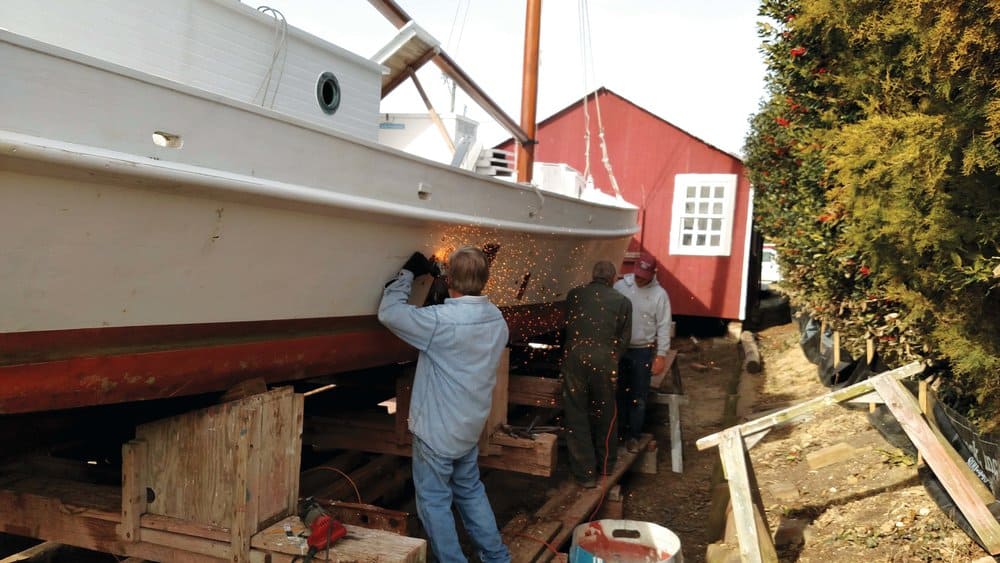
The Boats
The Butlers are unique Bay boatbuilders in that, up until just a few years ago, all of the hulls built at Reedville Marine Railway were built right-side-up. Through the generations, most Chesapeake Bay wooden boatbuilders built wooden hulls upside down and flipped the hulls over to install the decking and pilothouse. Several years ago, Butler built a new boat-shop with the ceiling high enough for him to flip boats. “It’s easier to build the hull upside down, but we had a low ceiling in our boat shop, so Dad and I built the hulls right-side-up,” says Butler. “When the hull is right-side-up you have to get underneath and nail the bottom and sides over your head,” he said. “The high ceiling allows me to build my boats a little more comfortable. I can build them just as good right-side-up as upside down.”
George P. built boats ranging from 12-foot skiffs to 50-foot deadrise charter boats. George M. has built 12-foot skiffs up to 46-foot deadrise charter boats. His boats range from custom built 38-foot recreational boats to 20 to 25-foot tow-bats (flat-bottom skiffs used in the pound net fishery) to 12-foot flat-bottom tenders used on Chesapeake Bay buyboats. “I still get jobs from the reputation of my father and grandfather,” he says. In 2013, he built an 18-foot deadrise skiff out of cedar planking; stem and stern out of spruce pine, with a fir keel. “Today, I build a whole lot of skiffs for grown men whose fathers and grandfathers worked the water,” he says. “That 18-footer went to a son of a crabber who my father built a boat for. He wanted a skiff just like the one my father built for his father.”
The pound net fishery has helped with the business too. In 2012, Butler built a 20-foot long trap boat (tow-bat). The skiffs are built to be towed to and from pound nets behind a power boat. A concave bottom near the transom helps keep the stern down when the skiff is under tow, just touching the water, and, when underway, it makes the boat lie level in the water.
In 2015, he built a 25-foot outboard-powered center-console deadrise skiff for a recreational fisherman. The boat was highlighted with guards made of clear-finished mahogany and pronounced tumblehome in the topsides, which curved inward as they rose above the waterline. On a powerboat, tumblehome makes for a wider bottom at the stern, which lowers the center of gravity and helps to prevent squatting in the stern when underway.
Butler is somewhat of a Virginia folk hero as he regularly attends Virginia Folklife Festivals and demonstrates his craft. He builds the same skiff at each festival. He stores it in the rafters of his shop and, when he gets ready for a demonstration, he takes it down and pulls it apart. As part of the Virginia Folklife Program in 2006, he agreed to take on an apprentice. The program is designed to help keep Virginia’s occupational culture alive. Warner Rice, whose grandfather, Herbert Rice, had been a Reedville boatbuilder, apprenticed with Butler through the program. “To be honest, I was pretty reluctant about taking on an apprentice. I really prefer to work alone—always have. I guess my main concern was that we wouldn’t work well together. But with Warner, that just wasn’t a problem. I knew him a bit and I got to know him much better through the apprenticeship. Building boats tends to do that,” says Butler.
The list of boats Butler has built is impressive, but there is one coming up of hallmark status. From time to time, he and his son Wesley work together in the shop. Wesley works full-time on a tugboat and helps out occasionally at the railway. Wesley’s son, Andrew is getting to the age when he needs a skiff. The plan is for George, Wesley, and Andrew to build the boat together. “I’m looking forward to it,” says Butler. “Andrew will be the fifth generation of my family to build Butler Skiffs in Reedville. That is real special to me!”

